The Best Bluetooth Hearing Aids of 2025, Audiologist Reviewed
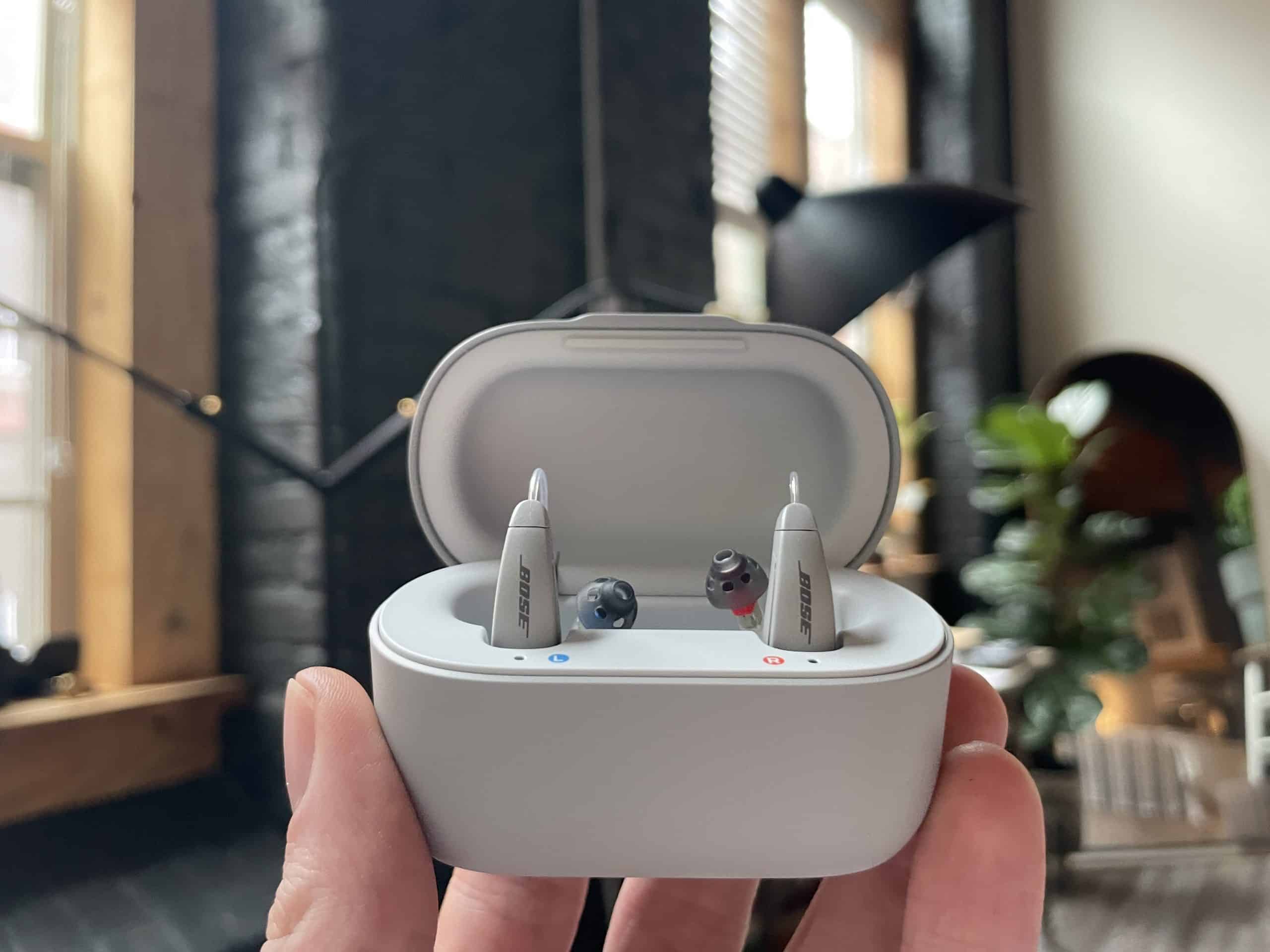
Key Findings
- Jabra Enhance hearing aids are one of the few OTC models that supports direct audio streaming from a smartphone.
- Eargo hearing aids are nearly invisible when worn, and they support ample sound adjustment features through a smartphone app.
- Lexie hearing aids support Bluetooth phone call streaming on certain models.
FYI: While our favorite Bluetooth hearing aids are ideal for smartphone users, there are more affordable options with manual controls. To find options for as low as $300 per pair, read our guide to this year’s best hearing aids.
Why Trust TheSeniorList?
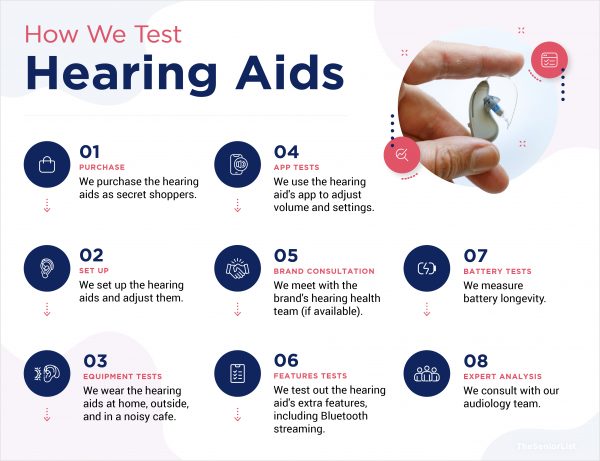
To create this list, we tested twenty different hearing aids from eight different brands. During these tests, our team evaluated each device on the following criteria:
- Remote adjustments: Hearing aids often require a high level of customization, so it’s important to be able to adjust them remotely. All the hearing aids on this list can be adjusted via smartphone, so you don’t need to remove them to adjust the sound settings.
- Direct streaming: While not a standard feature of all Bluetooth hearing aids, we gave extra points to options that supported streaming of calls and music to the hearing aids.
- Pricing: Traditional hearing aids often cost upwards of $4,000 per pair, but the affordable hearing aids on this list all offer options for below $2,000 per pair.
- Customer support: The best hearing aid brands come with support from audiologists and hearing health professionals. All the providers on this list offer a minimum of one year of remote support from professionals.
- Battery life: Most Bluetooth hearing aids use rechargeable batteries, so we looked for hearing aids that could last an entire day (or more) on a single charge.
The Best Bluetooth-Enabled Hearing Aids of 2025
- Enhance Select 50 : Best Bluetooth Features
- Eargo 6 : Best Invisible Option
- Lexie B2 Plus : Best Smartphone App
Our Top Picks Compared
|
Enhance Select 50
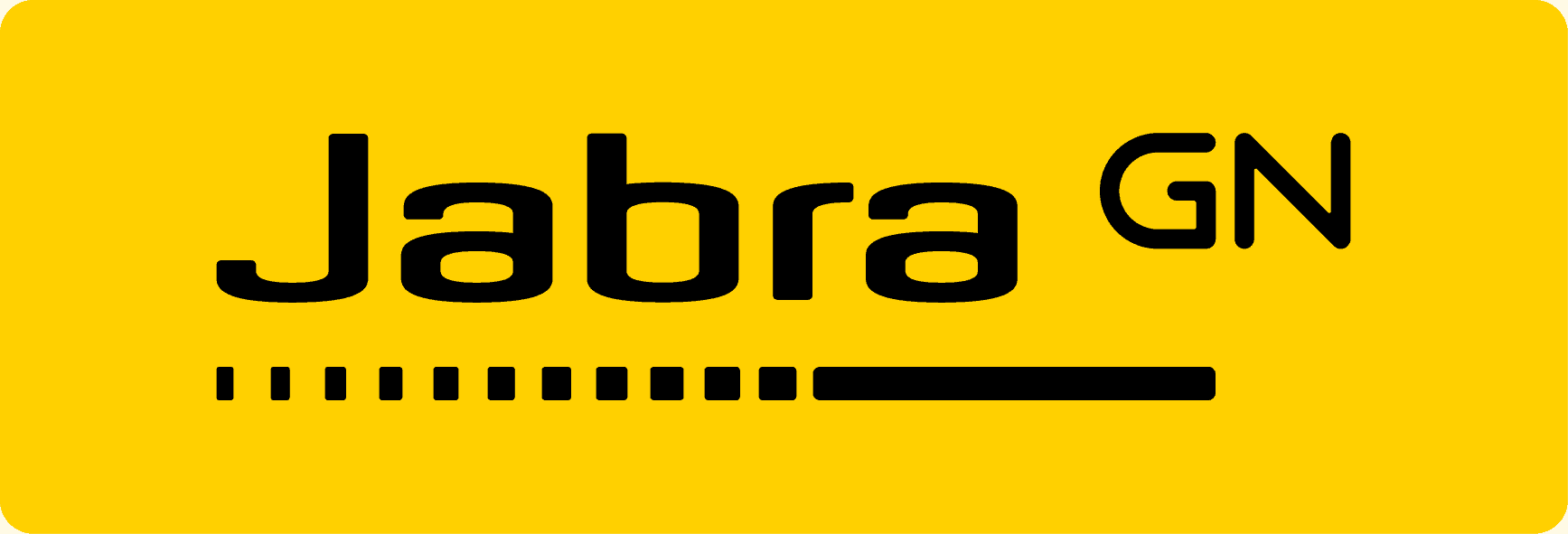 |
Eargo 6
 |
Lexie B2 Plus
 |
|
|---|---|---|---|
| Rating out of 5 | 4.8 | 4.2 | 4.4 |
| Cost for a pair | $995 – $1,195 |
$2,250 |
$999 |
| Warranty | 1 – 3 years |
1 year |
1 year |
| Bluetooth features |
|
|
|
Pro Tip: The hearing aids on this list can all be purchased directly on the internet, making them over-the-counter hearing aids, a solid alternative to prescribed technology.
Enhance Select 50 - Best Bluetooth Features
 View Packages
Links to Jabra Enhance
View Packages
Links to Jabra Enhance
What We Like Most:
- 30-hour battery life
- 100-day risk-free trial
- Great customer support
- Companion smartphone app

Overview
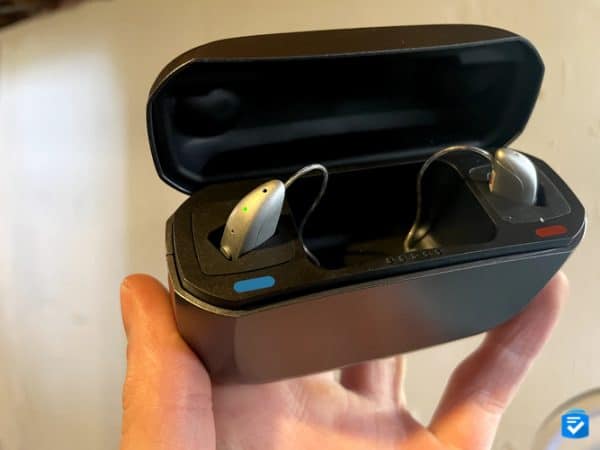
Cost: $995 – $1,195 for a pair
Jabra sells three different models of hearing aids, all of which support Bluetooth connectivity. The most affordable model, the Enhance Select 50R, pairs with the Jabra Enhance app, allowing you to control your settings, stream music, and listen to phone calls all from your hearing aids.
What Stood Out
The Jabra Enhance Select 50R is the only hearing aid on this list to support direct streaming of phone calls and music to the hearing aids. For many users, this will come in handy, as it means you won’t have to swap out your hearing aids for earbuds when you want to listen to music or take calls.

Elsewhere, we were impressed by the many features of the Jabra Enhance app. Through this app, we could adjust the volume levels on each hearing aid, as well as toggle between different sound settings. This made it a breeze to wear these hearing aids and transition between a quiet car and a noisy cafe. Unlike hearing aids of the past, which required manual adjustments to the devices themselves, the Jabra Enhance Select 50R hearing aids could be fine-tuned through our phones.
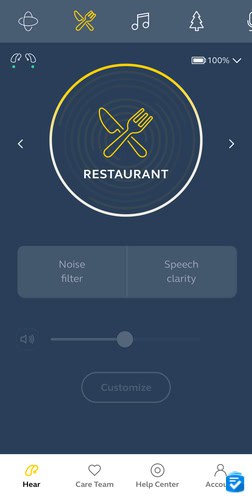
Pricing
Jabra Enhance Select 50R hearing aids cost $995. This includes the hearing aids, a charging case, and a one year warranty. If you pay an extra $200 for the Premium package, then your warranty will be extended to three years. You’ll get three years of professional support from Jabra’s team of hearing specialists.
To learn more about how Jabra’s different packages work, read our full guide to Jabra Enhance hearing aid pricing.
Drawbacks
The biggest drawback of Jabra Enhance hearing aids (and this applies to all of their models) is that you don’t get support from hearing specialists with the “Basic” package. For this, you’ll have to pony up $200 extra. Since Eargo hearing aids include lifetime hearing specialist support at no extra cost, we were displeased that Jabra charges extra for this.
Our Verdict
When it comes to Bluetooth features, no other OTC hearing aid possesses the adjustment and streaming features of Jabra Enhance Select models. To learn more about these hearing aids, check out our review of Jabra Enhance hearing aids.
Pros
- Under $1,000 for a pair
- Long-lasting rechargeable batteries
- 100-day risk-free trial
- Direct smartphone audio streaming
Cons
- No invisible model
- Not ideal for severe hearing loss
Eargo 6 - Best Invisible Option
What We Like Most:
- Rechargeable batteries
- Virtually invisible in-ear models
- Lifetime licensed support
- Flexible payment plans
Overview

Cost: $2,250 for a pair
Known for its nearly invisible in-ear devices, Eargo is a great option for discreet Bluetooth hearing aids. Its most recent model, the Eargo 6, improves upon the impressive formula with longer-lasting batteries, automatic sound adjustments, and even IPX7 water resistance, making them great hearing aids for active users.
>>Read more: Eargo 6 Review
What Stood Out
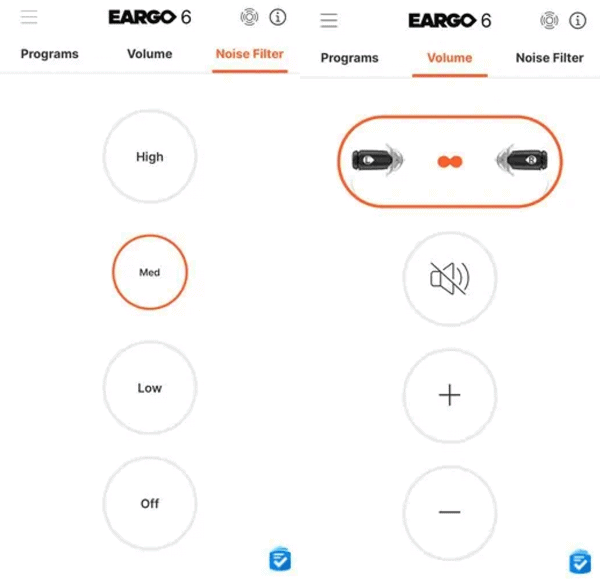
Similar to the other hearing aids on this list, the Eargo 6 Bluetooth features center around its smartphone app. Available on both iPhones and Androids, the Eargo App allows you to customize your hearing aids’ sound levels while they’re connected to a charger. It also enables you to contact Eargo’s hearing professionals via chat, video calls, or email. The professionals can provide remote adjustments to your hearing aids if you’re struggling on your own. Best of all, this support is included with all Eargo models for no extra cost.
Pricing
Eargo’s prices are the most expensive on this list. That said, its prior models, like the Eargo Max, go for less than $2,000 per pair. Any hearing aid purchase comes with lifetime support for the product. Eargo 6 also comes with a two-year warranty.
Drawbacks
Despite the ample functionality of the Eargo app, we were disappointed that Eargo 6 (and all Eargo hearing aids) are incompatible with streaming phone calls or music. If you’re looking to use your hearing aids to take calls, then we’d recommend a Jabra Enhance or Lexie model.
Our Verdict
To learn more about Eargo 6 and the company’s other devices, check out our full review of Eargo.
Pros
- Nearly invisible design
- Attentive customer service
- Free mobile app for personalizing hearing aids
- Lifetime support from licensed hearing professionals
Cons
- Suitable only for mild to moderate hearing loss
- No music streaming
Lexie B2 Plus - Best Smartphone App
What We Like Most:
- Easy adjustments via Bluetooth
- Hearing aid protection plan
- Under $1,000 for a pair
- Financing available
Overview

Cost: $999 for a pair
While Lexie B2 Plus hearing aids may lack the music streaming of the Jabra Enhance models, they possess a multifaceted smartphone app that makes it easy to remotely adjust our hearing aid settings.
What Stood Out
While wearing our Lexie B2 Plus hearing aids, we found crisp sound quality in a variety of sound environments. In particular, we noticed these hearing aids were highly effective in noisy environments (e.g., cafes or loud family dinners), and they routinely drowned out background noise while amplifying conversations.
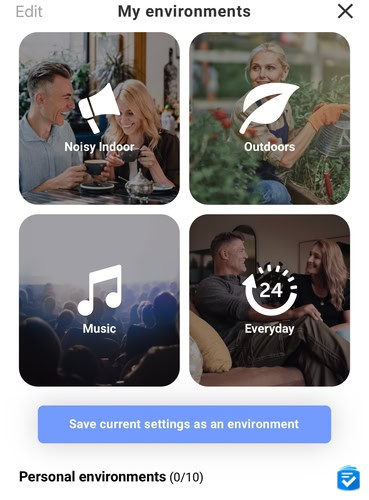
We could also use these hearing aids to stream calls from an iPhone. This feature worked exceptionally well for hands-free calling. It’s worth noting it was only available on iPhones, not Androids.

Additionally, after pairing our B2 Plus hearing aids with a smartphone, we were able to adjust them remotely through the Lexie App. Through this app, we could switch through sound environments, fine-tune which frequencies we needed amplify, and even adjust directionality. The Lexie B2 Plus was the only hearing aid on this list that allowed us to focus on sounds directly in front of us. This was particularly useful when having conversations in noisy environments.
Pricing
Lexie B2 Plus hearing aids cost $999. This price includes the charging case, a one-year warranty, and lifetime support from their team of hearing specialists. If you want an extended warranty, you can purchase a protection plan for $180, which covers even accidental damage for 24 months.
Drawbacks
Despite being built with Bose hardware, Lexie B2 Plus hearing aids didn’t support direct music streaming from smartphones. Seeing as Bose is known for the high-quality headphones and speakers, this seems like a strange omission.
If you want to stream music to your hearing aids, then a Jabra Enhance Select model is the way to go.
Our Verdict
While Lexie B2 Plus hearing aids can’t be used to stream music, they are still solid hearing aids with a highly useful smartphone app. To learn more about our experience with these hearing aids, read our full Lexie hearing aids review.
Pros
- Exceptional sound quality
- Phone call streaming for iPhones
- In-app hearing test and adjustments
- Unlimited customer support
Cons
- No music streaming
- No water-resistance
Honorable Mentions
These days, most hearing aid manufacturers create models with Bluetooth capabilities. The following options were compelling in their own right, but they didn’t quite make the cut.
- Audicus: A number of Audicus hearing aids support Bluetooth streaming, but we don’t like that this brand charges by the ear, as opposed to a pair. Moreover, we found their customer support was somewhat lacking.
- Widex: Hardly anyone makes hearing aids that are as durable as those from Widex; however, a pair of these hearing aids will cost anywhere between $3,000 and upward.
- MDHearing: We love this brand for its low prices, with hearing aids starting at $300 for a pair. One drawback? None of their models have Bluetooth capabilities. Read our MDHearing review to learn more.
Closing Thoughts
Almost every hearing aid manufacturer now offers Bluetooth options. Regardless of which one you choose, it’s important to test them first to ensure they address your specific type of hearing loss.
To learn more about the types of hearing loss and how to get fitted for hearing aids, check out our guide to hearing aids. Also check out our other helpful guides and lists:
Bluetooth Hearing Aids Frequently Asked Questions
-
Are Bluetooth hearing aids any good?
Bluetooth hearing aids are a great choice for people with hearing loss. Some of the most advanced hearing aids on the market have Bluetooth capabilities that allow for audio streaming and remote adjustments of sound settings.
-
What's the cost of Bluetooth hearing aids?
Bluetooth hearing aids can cost as low as $1,000 for a pair, but you’ll likely spend closer to $2,000 if you’d like a pair that can last longer or has streaming capabilities.
-
Can I add Bluetooth to my hearing aids?
Bluetooth technology is either built into your hearing aids or it’s not available. Some manufacturers offer Bluetooth as an extra feature for an additional price.
-
What is the range of Bluetooth hearing aids?
The Bluetooth range of hearing aids is generally about 30 feet, so you’ll most likely be within range of your smartphone or television.
-
What is the advantage of Bluetooth hearing aids?
The main advantages of Bluetooth hearing aids are the direct streaming capabilities and remote adjustments. Direct streaming means you won’t have to remove your hearing aids to listen to music or other audio, and remote adjustments means you’ll be able to adjust the volume and noise reduction from your phone rather than on the aids themselves.

